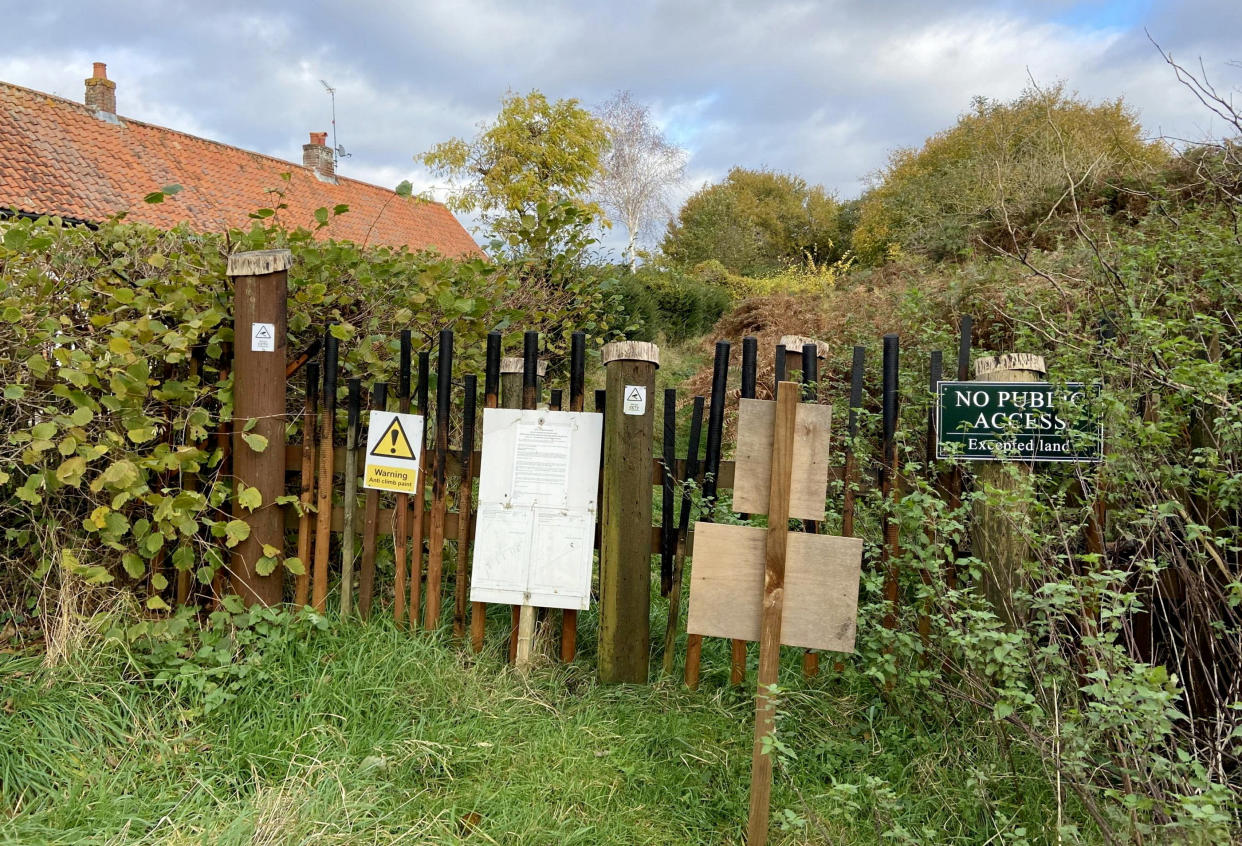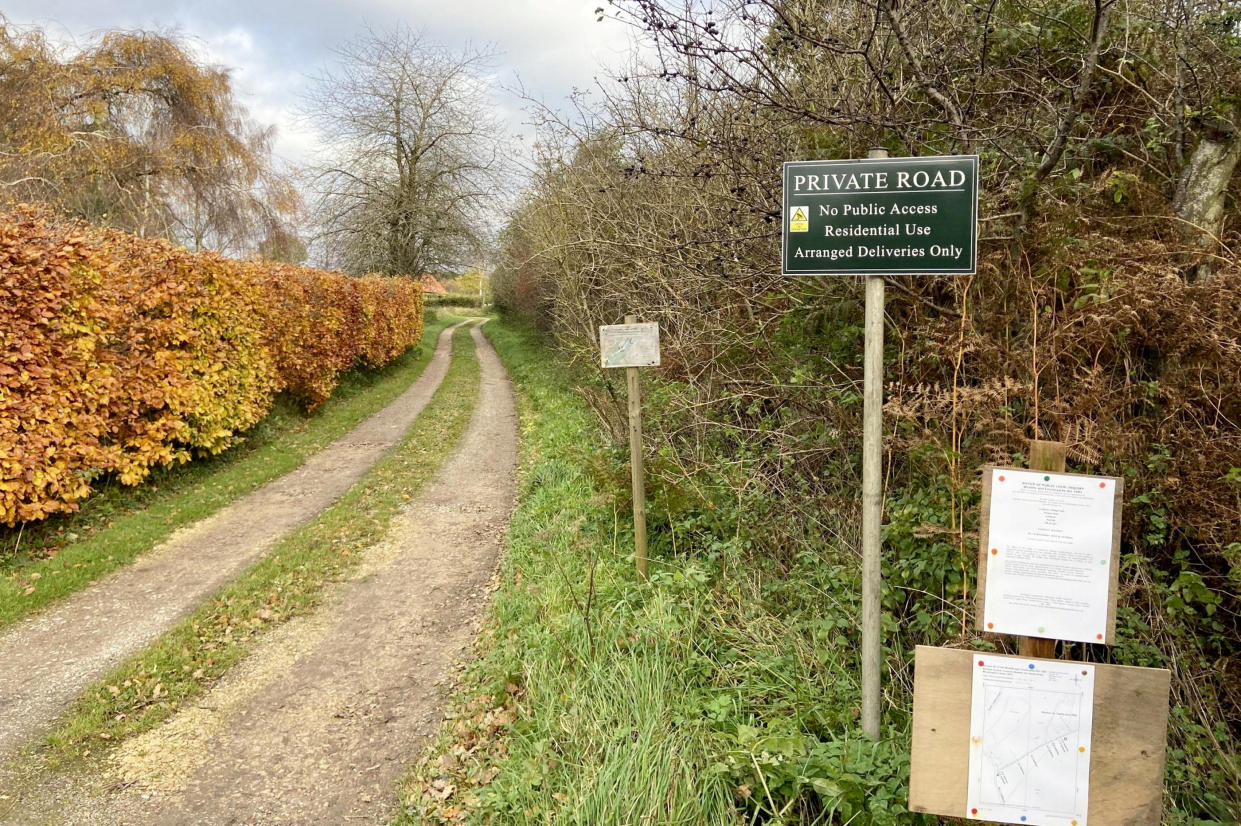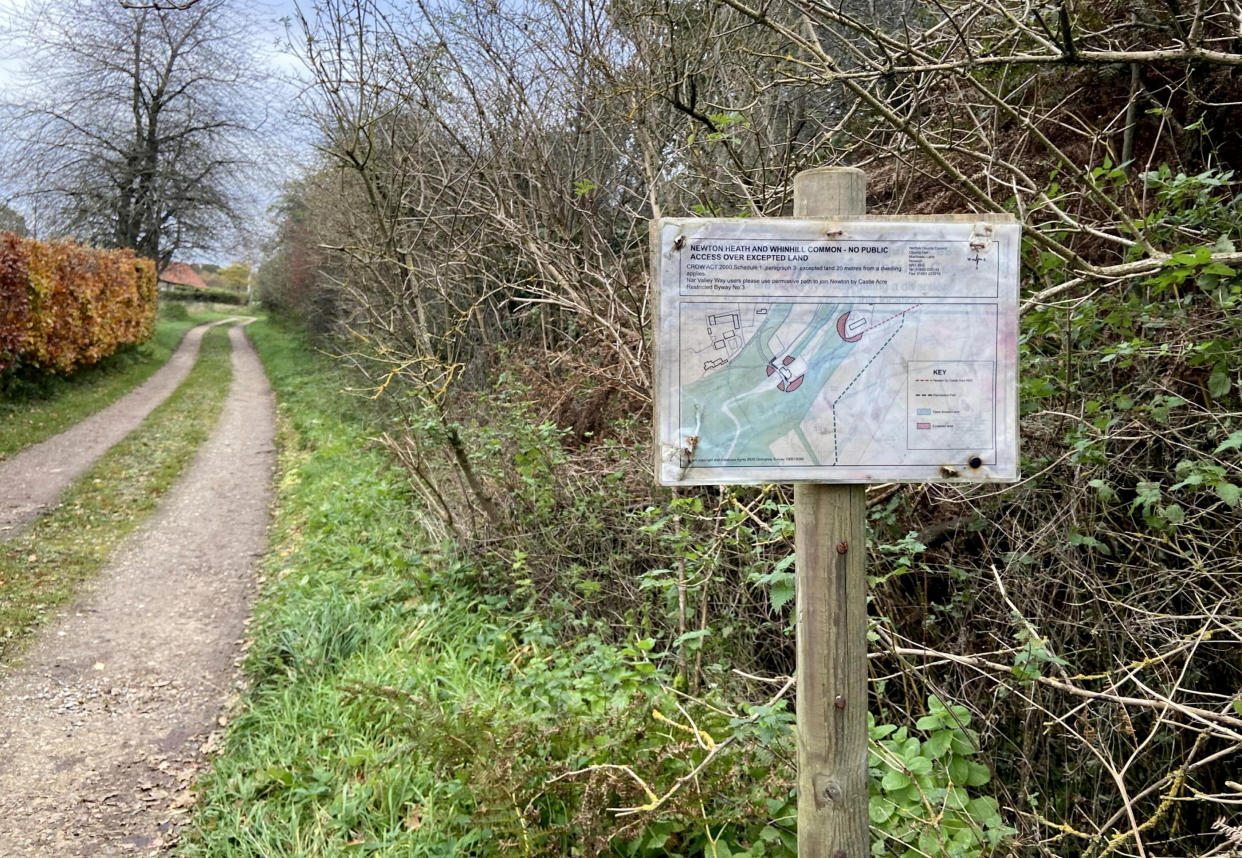Woman who erected greasy barricades to stop walkers near home loses court case

A lawyer who erected a 4ft barricade to stop walkers accessing a path near her house has lost her legal case.
Former Norfolk County Council (NCC) solicitor Sine Garvie-McInally put the posts across a path outside her home, stopping people from using part of the Nar Valley Way, in a long-running row with local ramblers. She claimed she put up the makeshift fence, smeared with anti-climbing paint, because the footpath route infringes on her right to privacy and had seen walkers 'staring' and shouting abuse at her.
The row resulted in a public inquiry but Garvie-McInally, who had claimed the path lies on "excepted land" under the Countryside Right of Way Act (2001), has now lost. Inspector Paul Freer from the Planning Inspectorate ruled that the path must be free for the public to use under the legal maxim: 'Once a highway, always a highway'.

The row dates back to 1993 when Garvie-Mcinally moved into the village with her family. The council had previously ruled the walkway was a registered path but it was unclear whether it was officially public, prompting rows over access for walkers and horse riders and leading to the erection of the barrier in 2020.
The Norfolk Ramblers Association applied to have the path registered as a public right of way, which was agreed by the council a year later, prompting an appeal from Garvie-Mcinally to the Planning Inspectorate. She claimed the path lies on "excepted land" under the Countryside Right of Way Act (2001), because her home is within 20m of the track and therefore public use was breaching her right to privacy.
'Once a highway always a highway'
But at a public inquiry held in November, locals and walkers produced maps proving the route has been used as far back 1774, arguing it should remain public through the legal maxim "once a highway always a highway".
At the inquiry, Garvie-Mcinally said she had endured verbal abuse and people urinating outside her garden, infringing her statutory right to privacy. She said if the decision did not go her way she would have to sell the house as she would not be able to live peacefully.
But the Planning Inspectorate found the evidence submitted showed that public rights for the path had existed since at least 1797, including rights to use the way on foot, on bicycle, on horseback and by non-mechanically propelled vehicles. It added: "Having found that the Restricted Byway is deemed to subsist, the legal maxim of 'once a highway always a highway' applies", meaning the path would remain public.

What are homeowners' rights if they're overlooked?
When it comes to homeowners' rights, people normally have legal recourse under either data protection laws, harassment or invasion of privacy.
But a Supreme Court ruling in favour of a group of flat owners whose homes are overlooked by the Tate Modern’s viewing gallery recently potentially changed home privacy rights. Earlier this month, the ruling set the precedent that it is plausible that simply observing someone in their home is a legal nuisance.
Residents of the Neo Bankside development on London’s South Bank took legal action in 2018 against the gallery’s board of trustees in a bid to stop "hundreds of thousands of visitors" looking into their homes, which are less than 40m away from the Tate’s viewing platform.
The supreme court ruled in favour of the residents on Wednesday, and set a new precedent under nuisance laws.



